Author: Jake Huolihan
If ever there were a hop deserving of the designation of classic American, Cascade would have to be it. Originally released in 1971 by the Oregon State University hop breeding program, Cascade took the country by storm when used by the likes of New Albion and Sierra Nevada Brewing Company who featured this novel variety in their Pale Ales and introduced curious beer drinkers to a new world of flavor and aroma.
Alpha: 5.5 – 9%
Beta: 6.0 – 7.5%
Cohumulone: 30 – 35% of alpha acids
Total Oil: 0.8 – 2.5 mL/100g
Myrcene: 45 – 60%
Humulene: 14 – 20%
Caryophyllene: 5 – 9%
Farnesene: 6 – 9%
Linalool: 0.3 – 0.6%
ß-Pinene: 0.5 – 0.8%
Parentage: Open seeding, Fuggle mother
Cascade is noted as imparting floral and citrus character, with many experiencing grapefruit in particular. While these are pretty common descriptors used for many of today’s popular hop varieties, this was novel 40 years ago, providing beer drinkers a completely new experience in beers such as New Albion Ale and Sierra Nevada Pale Ale. As a relatively new homebrewer, I don’t have much personal experience with Cascade and was excited to experiment with it for this edition of The Hop Chronicles!
| MAKING THE BEER |
My goal being to make a beer that amplified the hop character, I went with a very simple Pale Ale that wouldn’t allow much to get in the way of the Cascade hops.
Cascade Pale Ale
Recipe Details
| Batch Size | Boil Time | IBU | SRM | Est. OG | Est. FG | ABV |
|---|---|---|---|---|---|---|
| 5.5 gal | 60 min | 27.7 IBUs | 5.4 SRM | 1.046 | 1.009 | 4.9 % |
| Actuals | 1.046 | 1.006 | 5.2 % | |||
Fermentables
| Name | Amount | % |
|---|---|---|
| Briess Pale Ale Malt | 10.25 lbs | 95.35 |
| Weyermann Vienna | 8 oz | 4.65 |
Hops
| Name | Amount | Time | Use | Form | Alpha % |
|---|---|---|---|---|---|
| Cascade | 56 g | 30 min | Boil | Pellet | 5.5 |
| Cascade | 29 g | 5 min | Boil | Pellet | 5.5 |
| Cascade | 29 g | 0 min | Boil | Pellet | 5.5 |
| Cascade | 29 g | 3 days | Dry Hop | Pellet | 5.5 |
Yeast
| Name | Lab | Attenuation | Temperature |
|---|---|---|---|
| Safale US-05 (US-05) | DCL/Fermentis | 77% | 59°F - 75°F |
Download
| Download this recipe's BeerXML file |
I whipped up a small starter of Safale US-05 American Ale yeast and readied the rest of my ingredients the day prior to brewing.
The following afternoon, I adjusted my water to achieve my desired profile then turned the flame on under my kettle to heat the strike water.
I weighed out and milled the grains while waiting for the water to heat.
I went with the no sparge mash in a bag method for this brew and added the entire volume of water to my MLT once it was ready, the mash temperature ultimately landing just under my target.
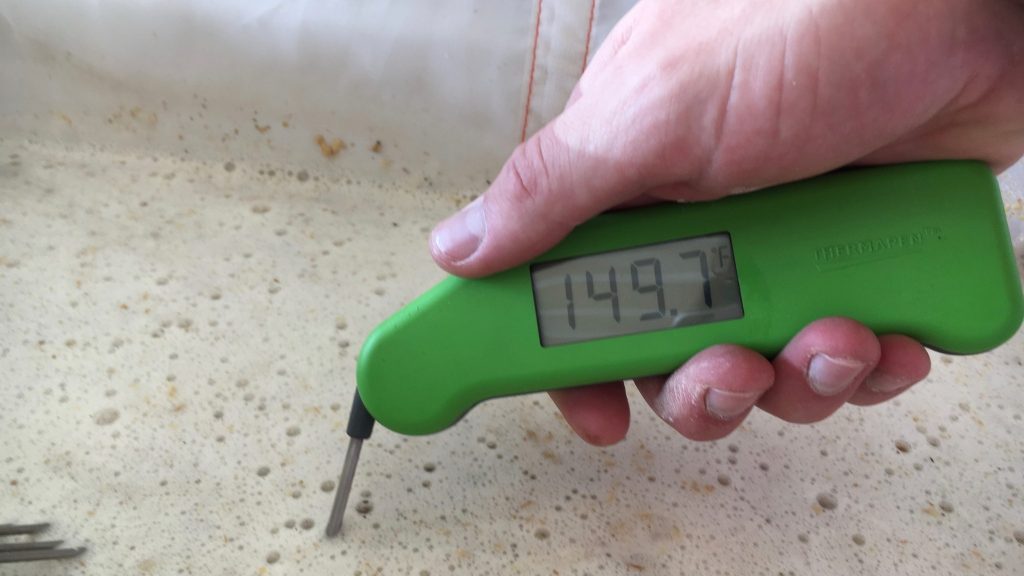
The entire volume of sweet wort was run off to my kettle after a 60 minute rest.
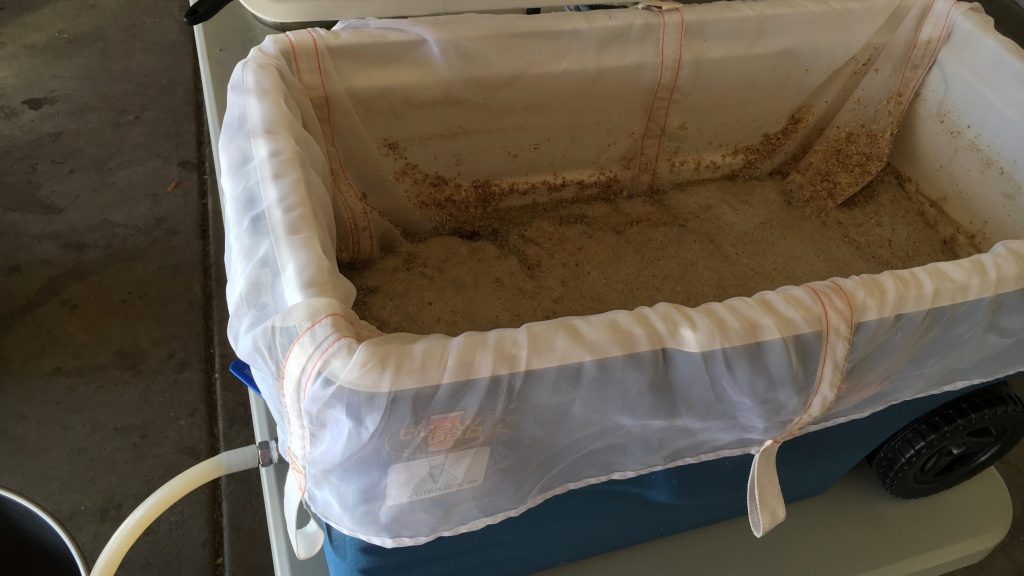
I opted for an abbreviated 30 minute boil, increasing the first hop addition to achieve an appropriate level of bitterness.
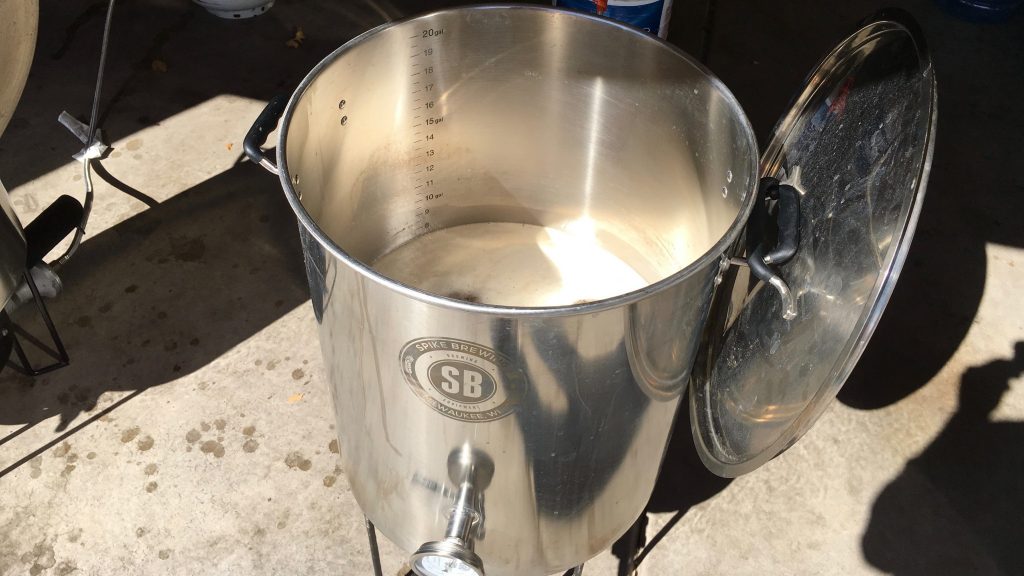
Once the boil was complete, I quickly chilled the wort to a few degrees above my groundwater temperature.
I transferred the chilled wort to a 6 gallon PET carboy and placed it in my cool chamber to finish chilling. A hydrometer measurement at this point showed my efficiency was slightly lower than expected, likely to due to my inexperience with a new mill, but certainly nothing to worry about.
The wort had settled in at my target fermentation temperature of 68°F/20°C within a few hours, at which point I pitched the yeast. Fermentation was very active the following day and began showing signs of slowing a few days later, so I bumped the temperature up to 72°F/22°C to encourage complete attenuation.
Similar hydrometer readings at 5 days and 7 days post-pitch indicated fermentation was indeed complete.
Since I noticed no off-flavors, it was time to proceed with kegging the beer.
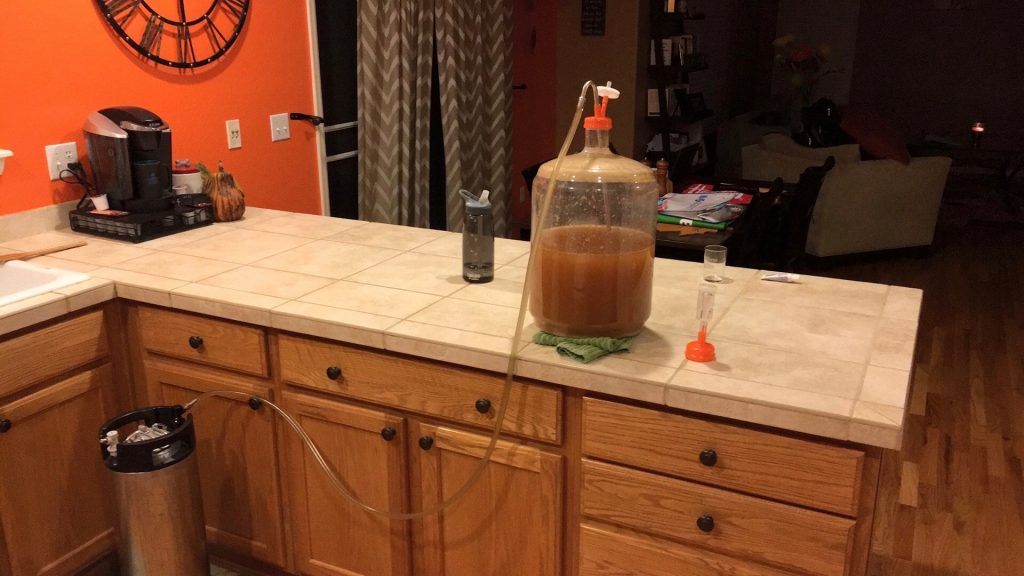
I placed the keg of warm beer in my keezer and allowed it to chill to 34°F/1°C before adding a dose of gelatin fining. The cold beer was then burst carbonated over 24 hours, after which I reduced the CO2 to serving pressure and let it sit a few more days before presenting it to tasters for evaluation.
| METHOD |
Participants were instructed to focus only on the aromatic qualities of the beer before evaluating the flavor. For each aroma and flavor descriptor, tasters were asked to write-in the perceived strength of that particular characteristic on a 0-9 scale where a rating of 0 meant they did not perceive the character at all and a 9 rating meant the character was extremely strong. Once the data was collected, the average rating of each aroma and flavor descriptor was compiled and analyzed.
| RESULTS |
A total of 15 people participated in the evaluation of this beer, all blind to the hop variety used until after they completed the survey. The average aroma and flavor ratings for each descriptor were plotted on a radar graph.
Average Ratings of Aroma and Flavor Perceptions
The 3 characteristics endorsed as being most prominent by participants:
| Aroma | Flavor |
| Citrus | Citrus |
| Tropical Fruit | Stone Fruit |
| Stone Fruit | Tropical Fruit |
The 3 characteristics endorsed as being least prominent by participants:
| Aroma | Flavor |
| Onion/Garlic + Dank/Catty (tie) | Dank/Catty |
| Grassy | Onion/Garlic |
| Earthy/Woody | Berry |
When asked to rate the pungency/strength of the hop, the majority of tasters perceived it as being moderately pungent.
Tasters were then instructed to identify beer styles they thought the hop would work well in.
Finally, participants were asked to rate how much they enjoyed the hop character on a 1 to 10 scale.
My Impressions: I perceived the aroma of this beer as having a slight lemon note, not pungent like a lemon candy, but a subtle background characteristic that gave the impression of slight citrus sweetness. This lemon character followed through in the flavor where I also detected hints of floral and spice, again not aggressively, but in a rather balanced presentation. Overall, I thought this beer was super pleasant and found it to be reminiscent of many classic American Pale Ales I’ve tried over the years!
| CONCLUSION |
Based on this single experience of making and evaluating a beer produced with only Cascade hops, it’s clear to me how it became a pillar of the craft brewing world– unique enough to provide beer drinkers something interesting and new, yet not so overpowering in character to drive less experienced palates away. The fact Cascade remains one of the most popularly used hop varieties in craft brewing speaks volumes about its appeal, and I’m doubtful it’ll be losing steam anytime soon. While my preference for more modern hop varieties like Citra, Mosaic, and Galaxy remains unchanged, it’s possible they may never have been if it weren’t for the humble Cascade.
If you have any thoughts on this classic American aroma hop, please share them in the comments section below!
Support Brülosophy In Style!
All designs are available in various colors and sizes on Amazon!
Follow Brülosophy on:
FACEBOOK | TWITTER | INSTAGRAM
If you enjoy this stuff and feel compelled to support Brulosophy.com, please check out the Support Us page for details on how you can very easily do so. Thanks!



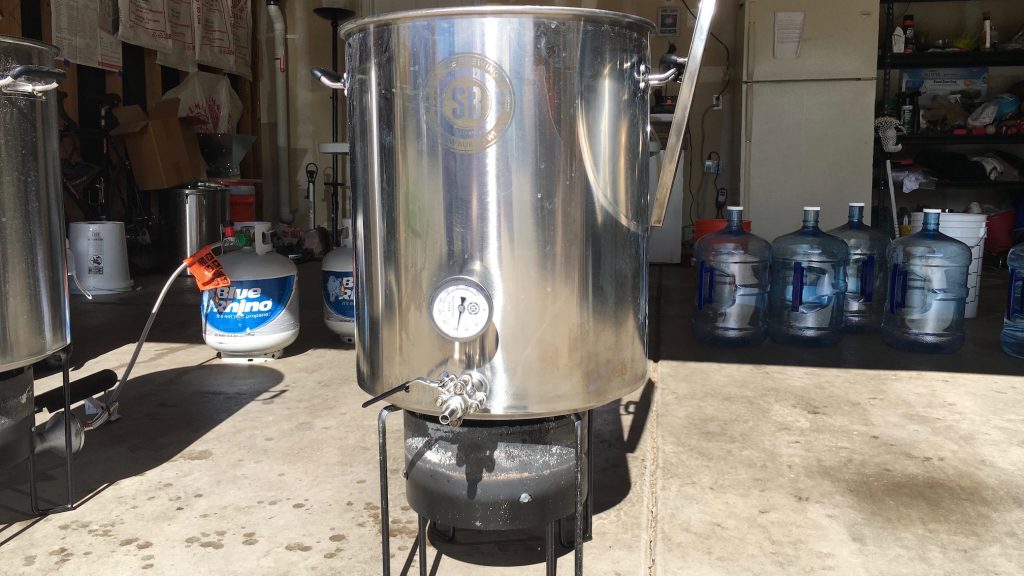
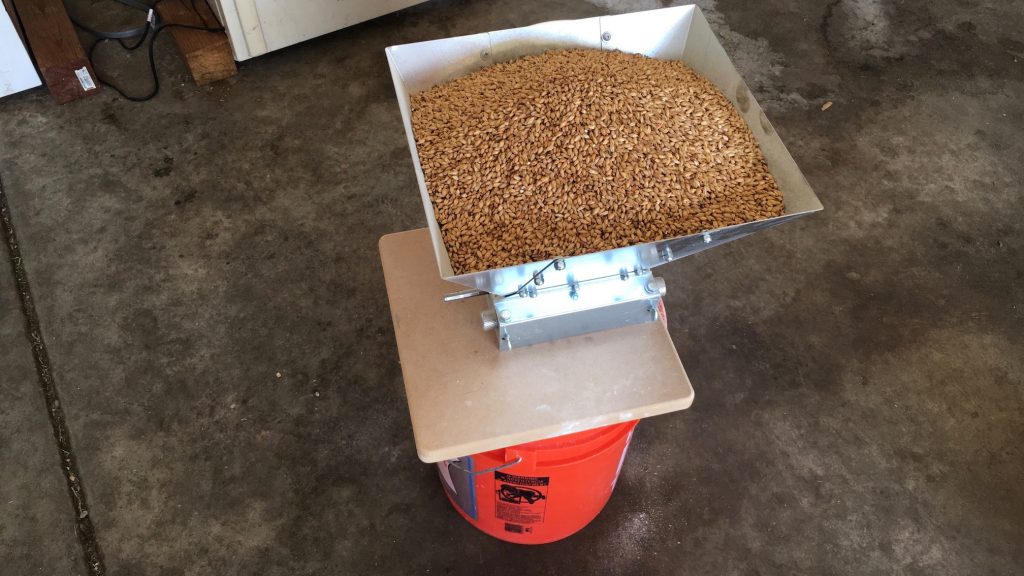
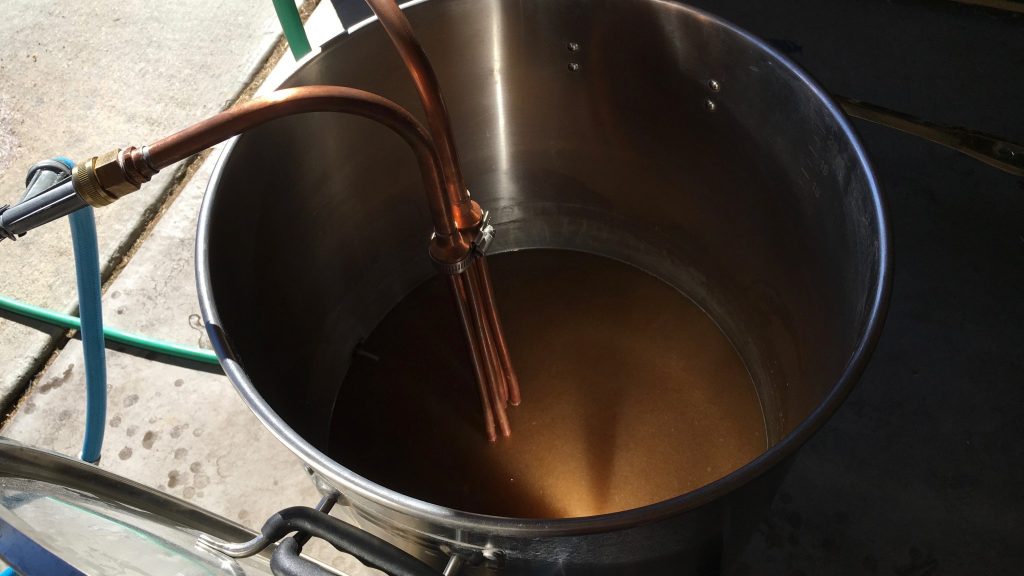
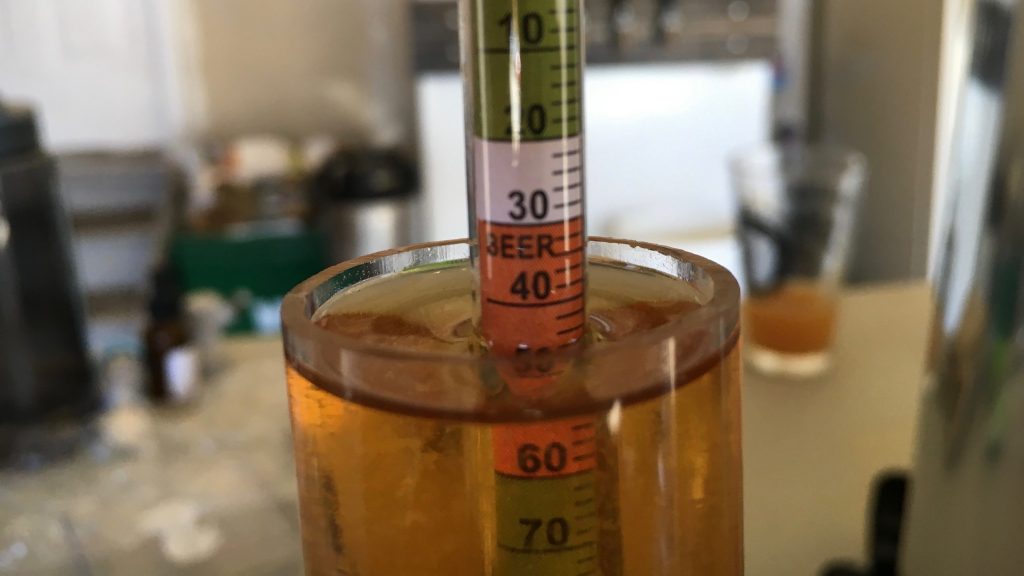
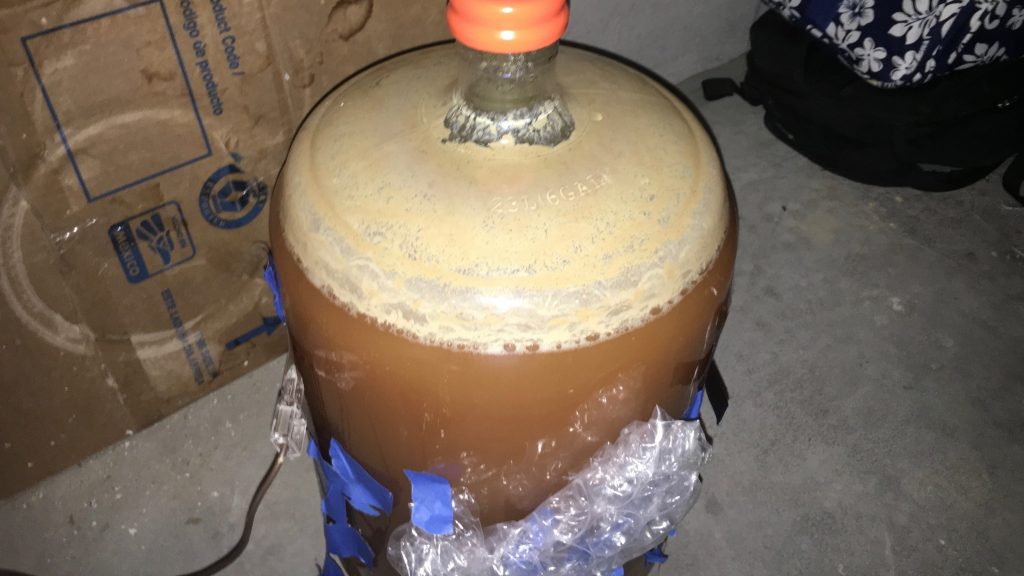
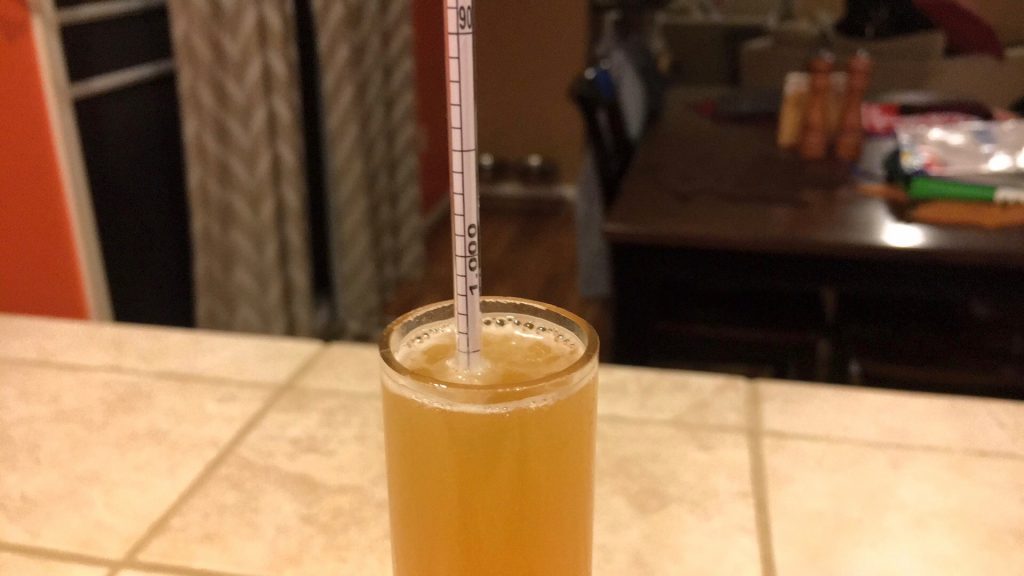
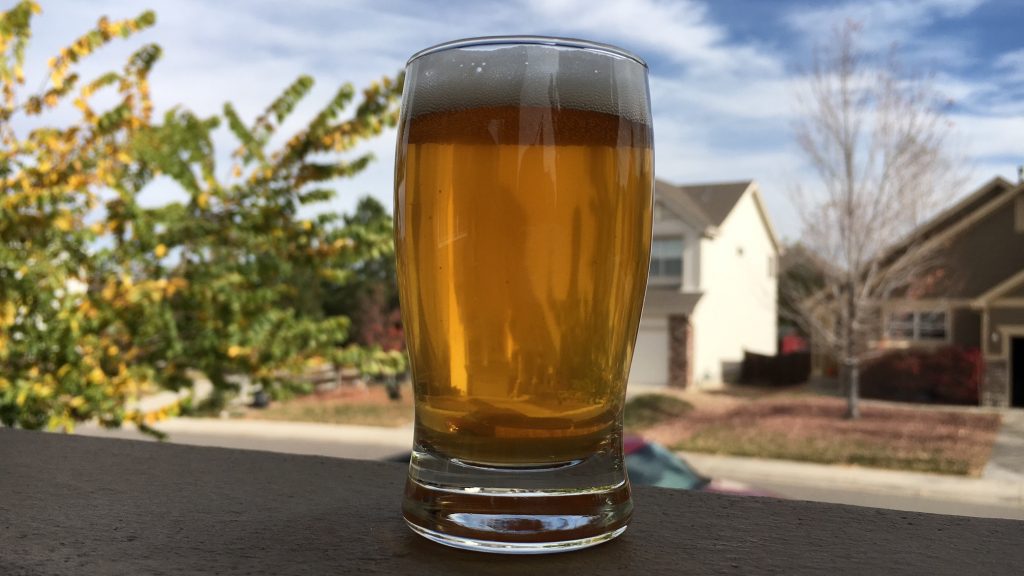
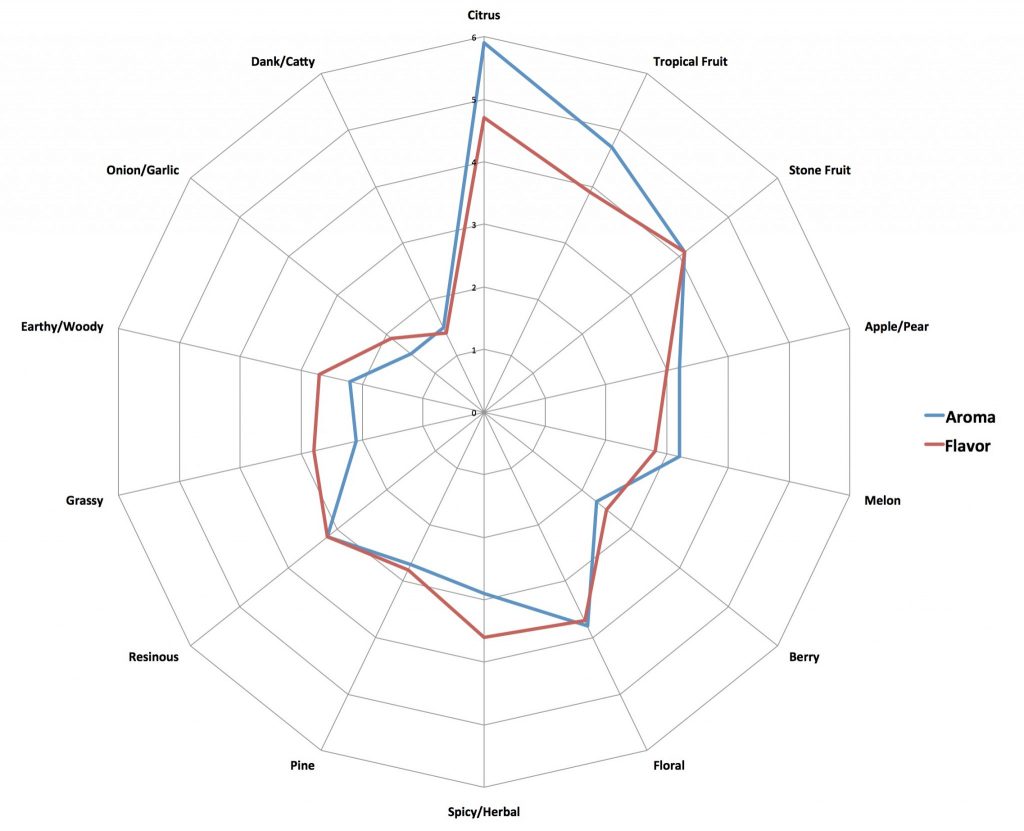
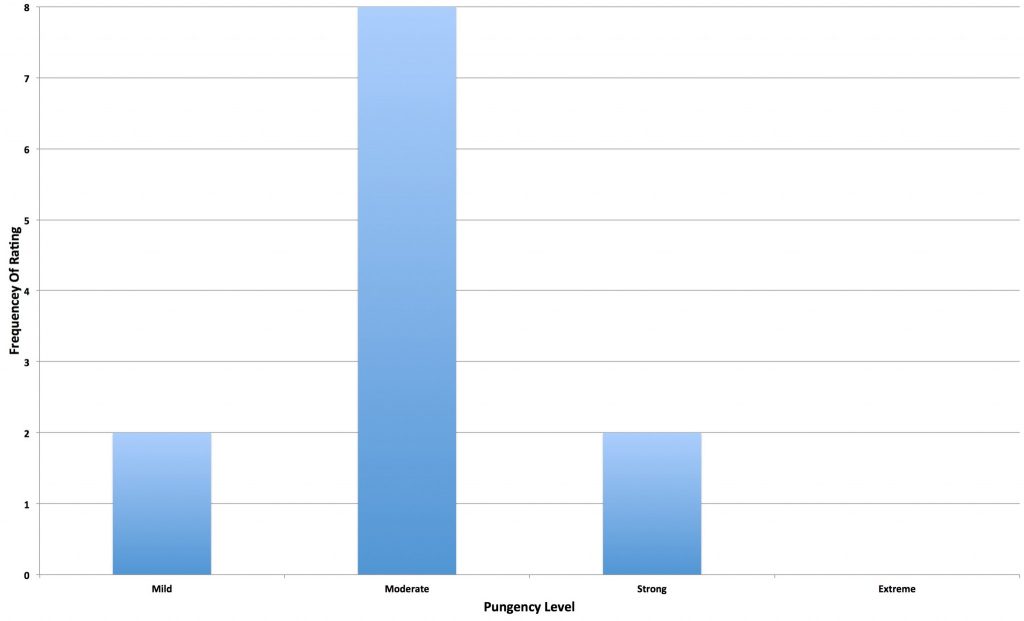
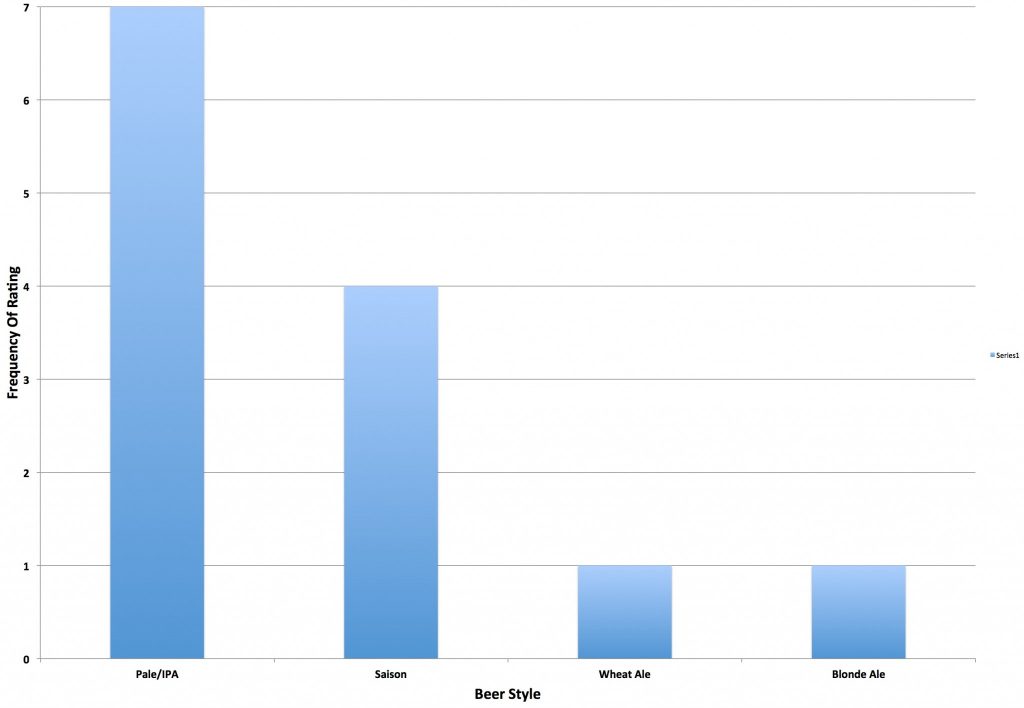
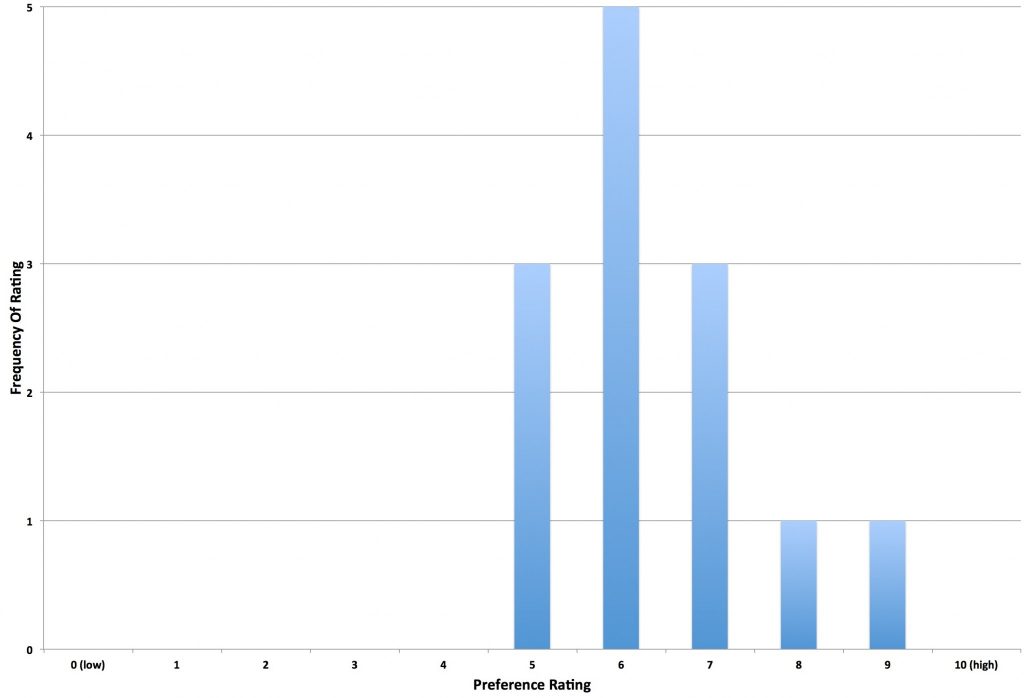










11 thoughts on “The Hop Chronicles | Cascade (2016) Pale Ale”
My first IPA was an all-Cascade. It’s a fond memory. At the time, I thought it was awful, grapefruit and potent. But, I grew to absolutely love it somehow!
Imagine it is the early 70s. It’s all bland, yellow beer. Then, you taste a Sierra Nevada Pale Ale. It’s an epic moment in beer history!
On a whim I recently made a SMaSH pale ale with Maris Otter and Cascade. I was worried it would be too ordinary, but I was pleasantly surprised.
Great, I am doing a Dark Star Hophead inspired beer in two weeks which is exactly that; a Maris Otter & Cascade SMaSH fermented with an english yeast (West Yorkshire in my case). Looking forward to it.
Your recipe indicated 60 min boil. Your narrative stated you did a 30 min boil. What did you do and as far as a recipe, was this a good beer a good drinker or was it just for an experiment?
It was only boiled for thirty min. This beer was actually really good. Most who tried it as well myself, really seemed to enjoy
I love Cascade. As my beer interests and preferences turn toward things you can do with yeast and fermentation and away from hops, I find myself increasingly thinking about it as the right complement in the beer.
Just curious – did the testers pick up that it was Cascade or were they surprised when you revealed it? I would imagine that it’s one of the more recognised hops (even though I am unsure if I would notice it in a test situation)
I don’t think anyone that tasted it told me they thought it was cascade. It’s quite tough 100% blind to pick out what we’re doing a lot of the time.
I’ve won a competition in the past with a Cascade only pale ale. Sometimes, simplicity can be a beautiful thing. If you get everything else right in your brewing process, ie water chem, ferm temp, pitch rate etc, simple beers can really shine. It was a great example of the citrusy flavor’s american hoppy beers have been known for.
My recipe was literally 2-row, crystal 40 and all cascade hops, mashed at 150, wlp002 yeast.
Based on previous experiments you might have just hit the nail in the head with your water treatment! 😀
Hey man, this was a long time ago, but do you have this recipe by chance? Trying to do the same thing.